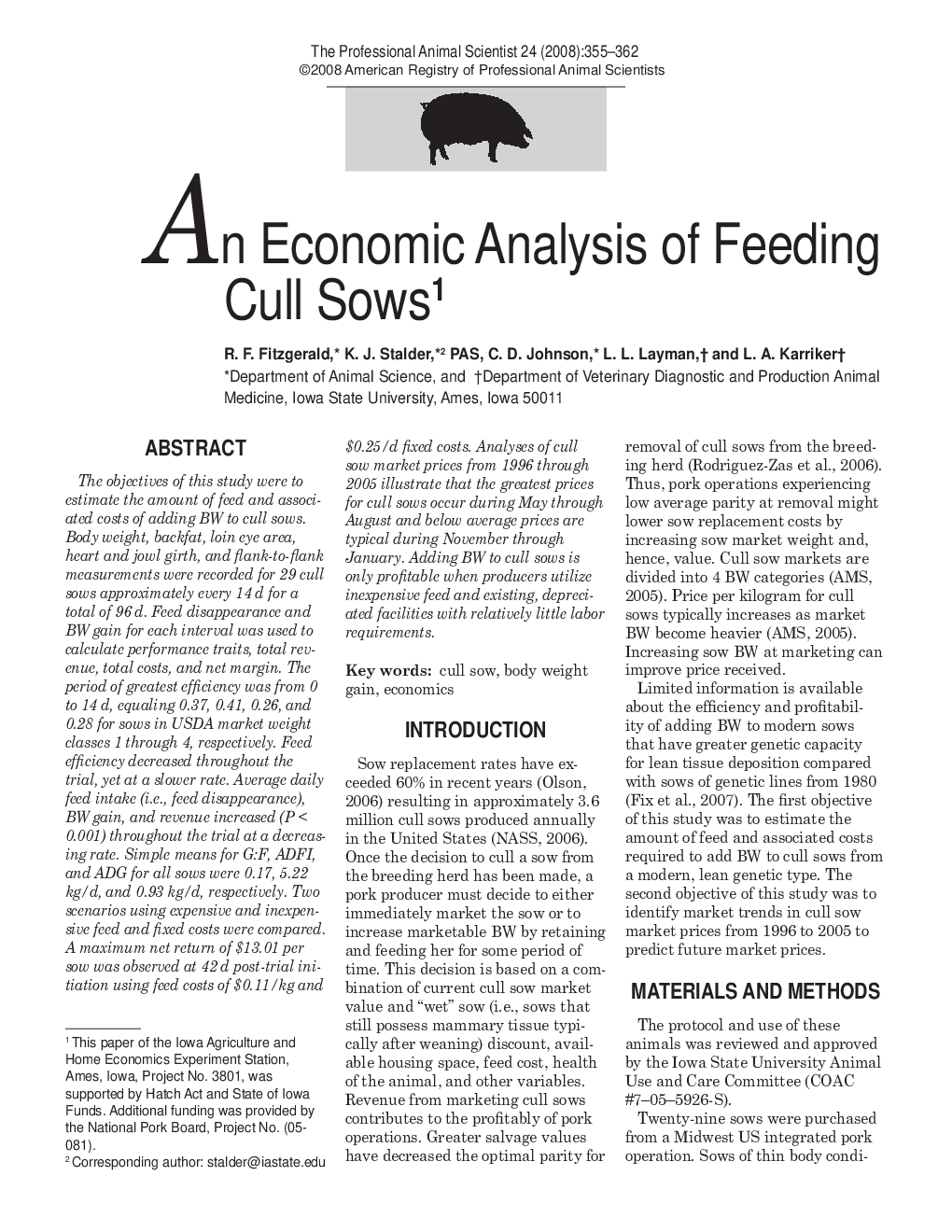| Article ID | Journal | Published Year | Pages | File Type |
|---|---|---|---|---|
| 2454342 | The Professional Animal Scientist | 2008 | 8 Pages |
Abstract
The objectives of this study were to estimate the amount of feed and associated costs of adding BW to cull sows. Body weight, backfat, loin eye area, heart and jowl girth, and flank-to-flank measurements were recorded for 29 cull sows approximately every 14 d for a total of 96 d. Feed disappearance and BW gain for each interval was used to calculate performance traits, total revenue, total costs, and net margin. The period of greatest efficiency was from 0 to 14 d, equaling 0.37, 0.41, 0.26, and 0.28 for sows in USDA market weight classes 1 through 4, respectively. Feed efficiency decreased throughout the trial, yet at a slower rate. Average daily feed intake (i.e., feed disappearance), BW gain, and revenue increased (P < 0.001) throughout the trial at a decreasing rate. Simple means for G:F, ADFI, and ADG for all sows were 0.17, 5.22 kg/d, and 0.93 kg/d, respectively. Two scenarios using expensive and inexpensive feed and fixed costs were compared. A maximum net return of $13.01 per sow was observed at 42 d post-trial initiation using feed costs of $0.11/kg $and 0.25/d fixed costs. Analyses of cull sow market prices from 1996 through 2005 illustrate that the greatest prices for cull sows occur during May through August and below average prices are typical during November through January. Adding BW to cull sows is only profitable when producers utilize inexpensive feed and existing, depreciated facilities with relatively little labor requirements.
Keywords
Related Topics
Life Sciences
Agricultural and Biological Sciences
Animal Science and Zoology
Authors
R.F. Fitzgerald, K.J. PAS, C.D. Johnson, L.L. Layman, L.A. Karriker,
